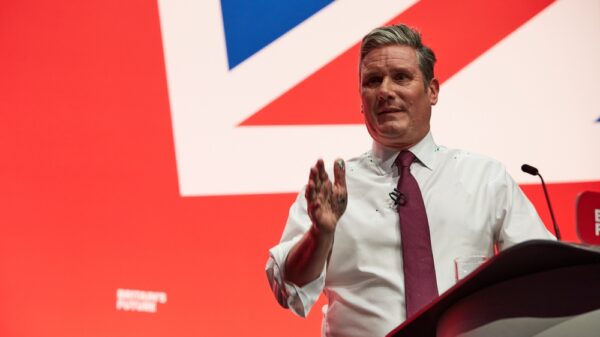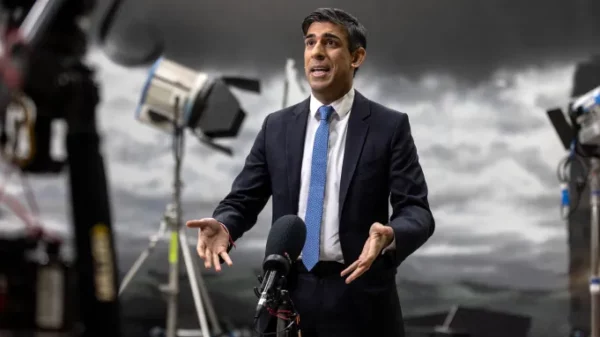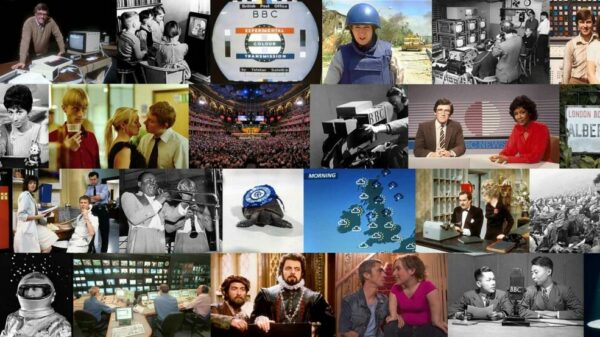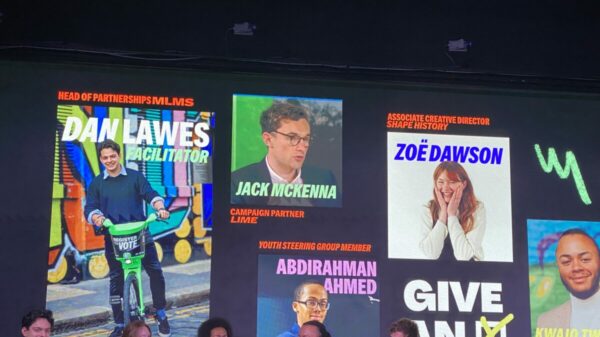According to new Ofcom research, younger adults now watch almost seven times less ‘traditional’ scheduled TV than those aged 65 and over.
The communications regulator’s report highlighted a growing ‘generation gap’ in viewing habits, with those aged between 16 and 24 now spending 53 minutes a day watching broadcast TV.
In comparison, people aged 65 and over watch traditional TV for five hours and 50 minutes a day on average, which is a small increase from a decade ago.
In general, public service broadcasters are continuing to face falls in audience and levels of viewing, despite receiving over ten million views for major national events such as the Queen’s Platinum Jubilee and the Women’s Euro 2022 Final.
Unsurprisingly, Ofcom have put the change in viewing habits down to the growing popularity of on-demand streaming services such as Netflix, Amazon Prime Video and Disney+. Around a fifth of UK homes (5.2 million) now subscribe to all three of the biggest streaming platforms, with nine in ten 18- to 24-year-olds saying they bypass TV channels and choose to watch content on streaming, on-demand or video-based social platforms.
“The streaming revolution is stretching the TV generation gap, creating a stark divide in the viewing habits of younger and older people,” Ofcom director of market intelligence, Ian Macrae, said.
“Traditional broadcasters face tough competition from online streaming platforms, which they’re partly meeting through the popularity of their own on-demand player apps.”
Despite broadcasters’ efforts to battle this substantial loss in viewers, it seems streamers will land heavy blows on TV advertising. In recent months, the Disney+ service and the streaming giant Netflix have both announced plans to implement ad-supported tiers to lower subscription costs, reportedly debuting the new platforms later this year.
Is this the death of traditional TV advertising?
 The Commerical Works partner Robert van Ossenbruggen believes that while TV is “slowly but surely” taking a more modest place in an “increasingly fragmented advertising ecosystem”, the industry cannot declare anything as dead or dying just yet.
The Commerical Works partner Robert van Ossenbruggen believes that while TV is “slowly but surely” taking a more modest place in an “increasingly fragmented advertising ecosystem”, the industry cannot declare anything as dead or dying just yet.
“The age groups with the most spending power (35 plus) still watch loads of broadcast TV (2 to 6 hours per day) and the decline gets slower for the older age groups. That’s quite a bit of time and more importantly time that is easier to draw eyeballs to ads.”
The marketing consultant and trainer pointed to research by Karen Nelson Field, which showed that the attention people pay to ads varies “wildly” over channels and platforms.
“TV still outperforms most alternatives when it comes to attention metrics and sales uplift,” he said.
“That shouldn’t be much of a surprise as the industry has agreed that a display ad ‘counts’ as an impression if only half of its pixels are in view for only one second (two seconds for videos). Apparently, in some channels we just can’t afford to be more ambitious than that. Besides, when you zoom in, ‘cost-efficient’ digital ads are mostly cheap.”
Van Ossenbruggen also highlighted that Dr. Augustine Fou’s research points to fraudulent ad views dominating many digital channels.
“Fou has demonstrated in various ways that for many digital channels, a substantial chunk of views, impressions or clicks are not human,” he said.
“Official IVT metrics are likely to underestimate all kinds of fraudulent activity. In programmatic ads especially, budgets are spent on all kinds of things except eyeballs.”
While the marketing expert acknowledges the developments in streaming, he believes it is “safe to assume that traditional TV is still one of the most powerful platforms to get the biggest bang for your ad bucks.”
 Best Marketing Consultants marketing director, Mark Hull, agrees with Ossenbruggen’s positive opinion of TV advertising, claiming that the platform still offers a “great deal of effective reach.”
Best Marketing Consultants marketing director, Mark Hull, agrees with Ossenbruggen’s positive opinion of TV advertising, claiming that the platform still offers a “great deal of effective reach.”
“The older audience isn’t going to suddenly disappear over the next few years, or even next decade or so.”
“I don’t think TV is in trouble yet, certainly not for mass market brand building. What it does mean is that media planners need to work harder on understanding the full breadth of media and users and ensure that there is a good, blended media strategy that suits the product and targeted audience.”
In contrast to the views put forward from both Hull and Ossenbruggen, Starcom strategy director Daniel Coleman feels that the industry needs to adapt itself to appeal to younger generations.
He described the Ofcom research as a “brutally simple” way of questioning the orthodoxy of much media planning – the idea that conventional TV works, so many marketers just “bung the advertisements on TV”.
“The 16-24 audience may well be less important to advertisers as spending power is more concentrated in older age groups, but brands need to introduce themselves to and recruit new consumers. Of course linear TV still reaches these younger audiences but not as effectively as older audiences and this clearly needs to be supplemented.”

Coleman recognises that VOD and connected TV has the advantage of being able to use the same assets and can “undoubtedly” start to fill the gap between TV advertising and other digital platforms.
“At the moment many media planning decisions are driven by the availability of creative assets, which are more often than not designed for TV. This isn’t helpful for advertisers, creative or media agencies.”
“A 30″ ad alone is not going to be enough as we need a whole suite of assets – audio, posters, short form video – to be able to recruit younger audiences. ‘Bunging it on TV’ alone just doesn’t work for younger audiences. We need specific creative as well as media plans to fix this problem.”
It seems the jury is still out as to whether traditional TV advertising holds the power and weight it once did. Regardless of whether it remains as effective as it was 10, 20 or even 30 years ago, traditional TV advertising is likely to stick around for many years to come.









